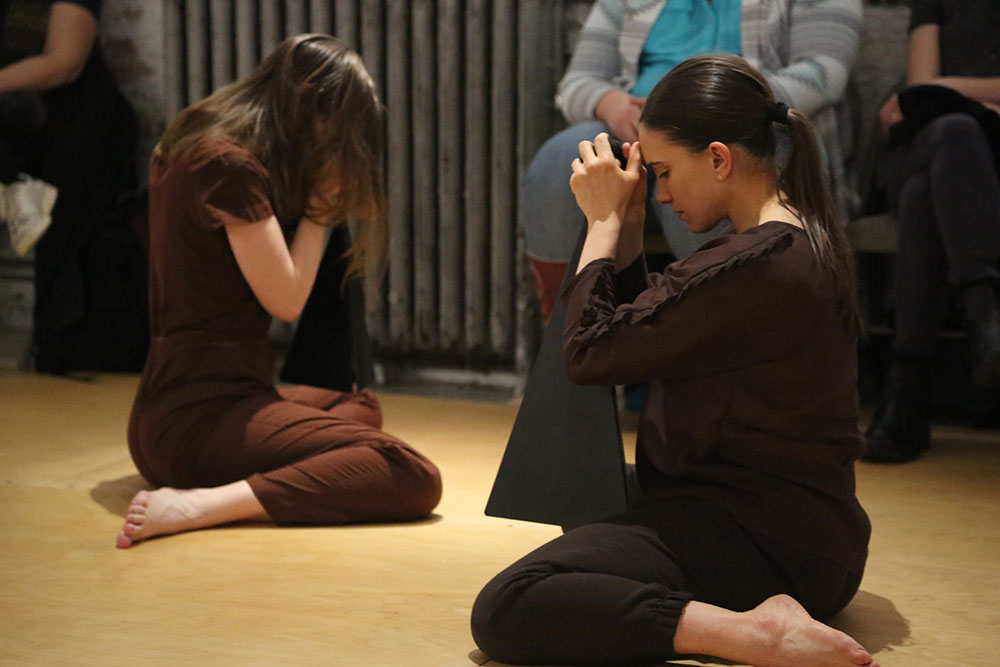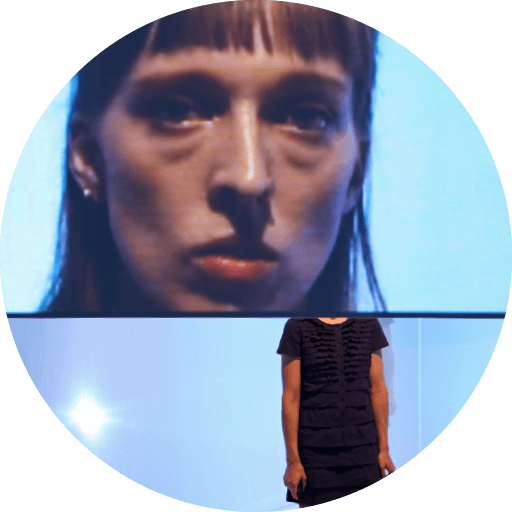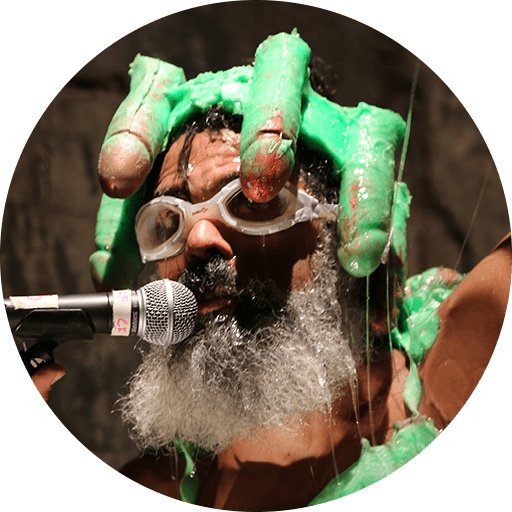Review: Anna Sperber’s Mysteries Remain Intact
Alastair Macaulay, New York Times
Alastair Macaulay, New York Times
The world that Anna Sperber — performer and choreographer — inhabits onstage is not yours or mine. It’s private: a mystery to outsiders from first to last.
Yet she makes it immediately compelling. You watch in hope of understanding her better. Instead, in “Wealth From the Salt Seas,” presented this week at the Chocolate Factory Theater in Queens, she remains opaque, an unknown species keen to remain unknowable. The audience sits on four sides of the action: Even when she comes closest to you, she feels remote.
Ms. Sperber ranges from being quietly withdrawn to obsessively intense. It’s a pleasure to watch her face, her physique, her variety. At the start, in silence, she walks to a corner of the stage — stands, turns, looks askance. Then she places the back of her hand to her neck while she looks to one side. Is the gesture one of mild anxiety? Maybe, but her thoughts seem directed elsewhere. Her eyes continue to suggest some other preoccupation while her hands start to trace the top and bottom of her pelvis. Soon she travels across the stage: a few spins this way, a few that. Who is she? What’s driving her?
But “Wealth From the Salt Seas” tells no story. And, although this hourlong piece changes Ms. Sperber’s character, it does not deepen it. After this beginning in silence, the piece becomes a collaboration with the singer-musician Gelsey Bell — who shares the stage, is similarly dressed (barefoot, leggings and chemise in matching brown) and is evidently a kindred spirit. Some of Ms. Bell’s music is taped, but some consists of remarkable vocalism. She emits a number of trills (long lines of rolling Rs with full voice, now inwardly delivered, at high pressure) and single notes sustained with the steadiness of electronic signals.

“Wealth” proceeds in sections, as if the two women were switching from one task to another, all equally mysterious, but some failing to sustain interest. Among the highlights was Ms. Sperber’s way of standing on the spot, hands clasped high above her head, while sending rapid vibrations from her knees and heels. And in a quietly thrashing solo — helplessly driven — she paced to and fro within a limited space, bending low from the waist in a fixed rhythm during a sequence in which she also shookher head rapidly from side to side.
In another moment, the two women, at opposite ends of the room, shook large metal rectangles between their hands, so that the quivering material both gave off sound and reflected it, gradually reaching a climax, then ebbing from it. It recalled an earlier passage in which they had picked up small, tintinnabulating obelisks. All this was wonderfully strange — until it started to become schematically strange. The spell of the early sections didn’t grow; I became aware of having to work to pay attention.





























